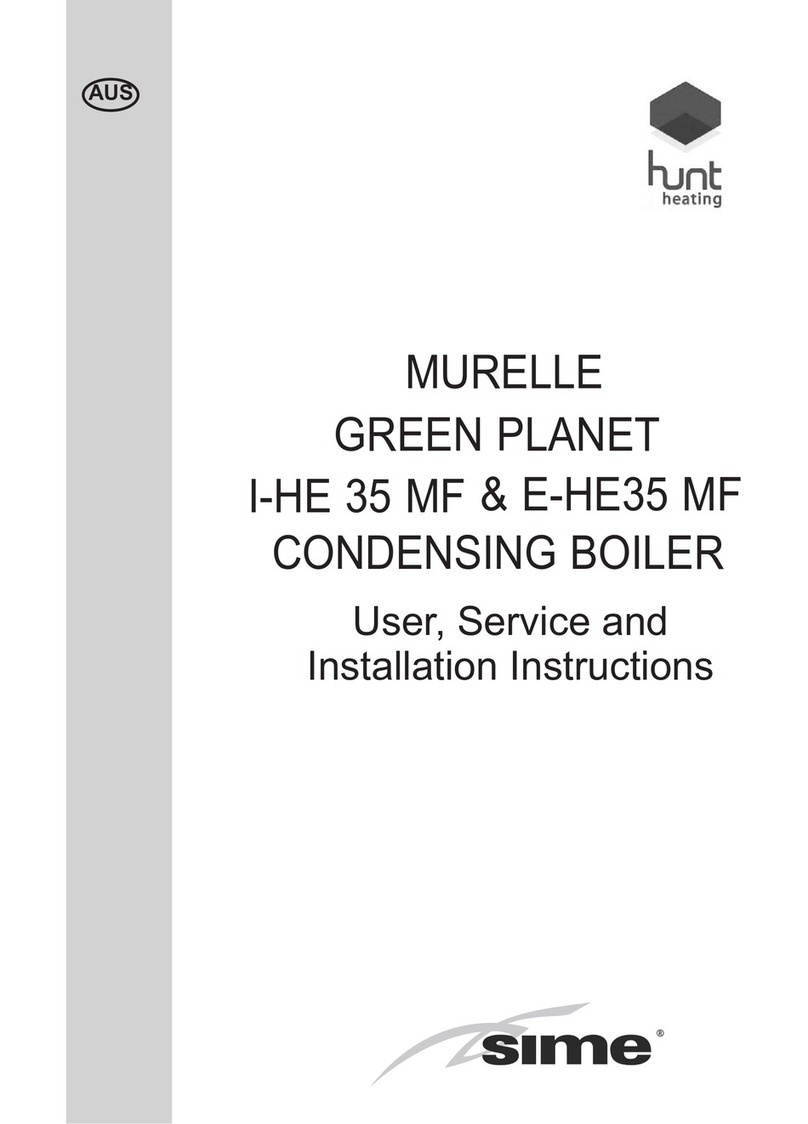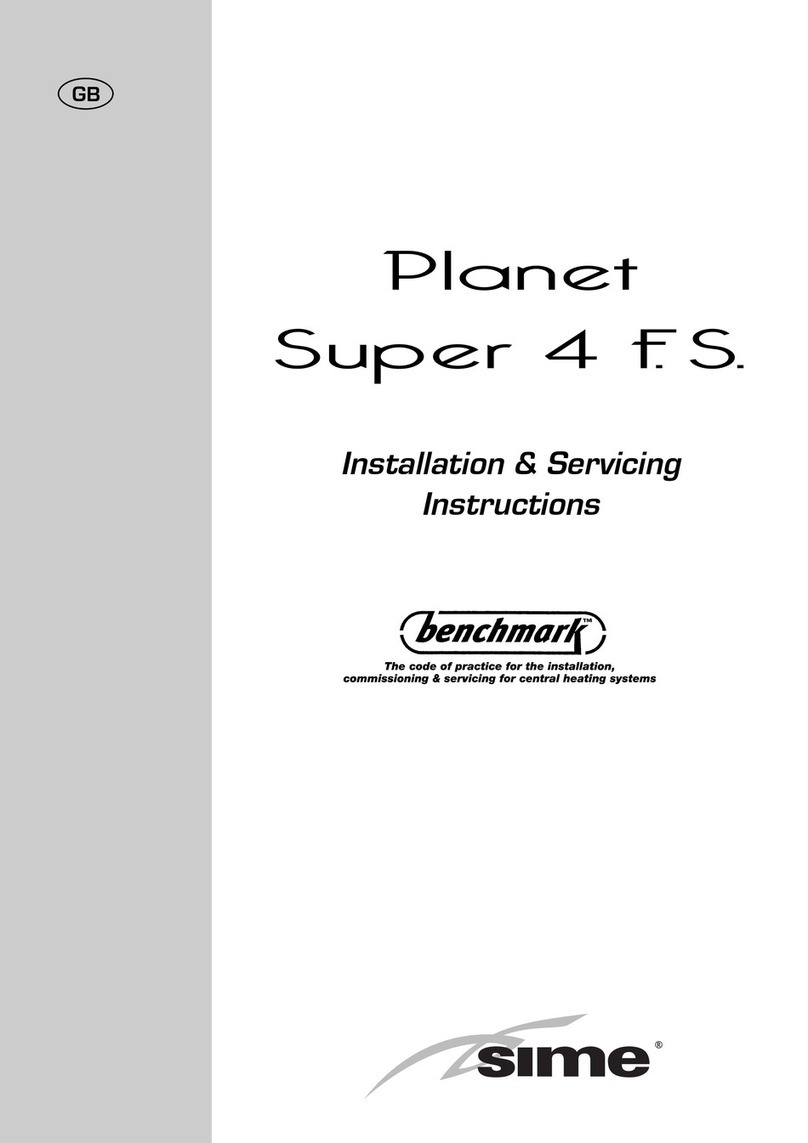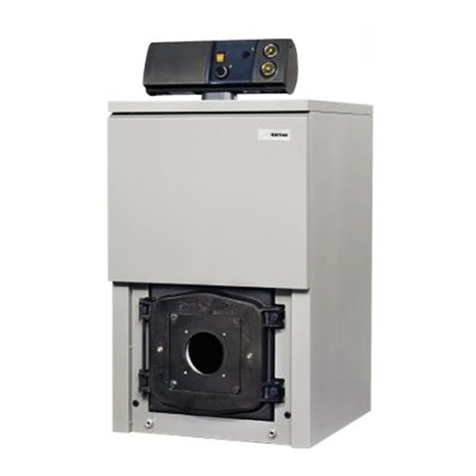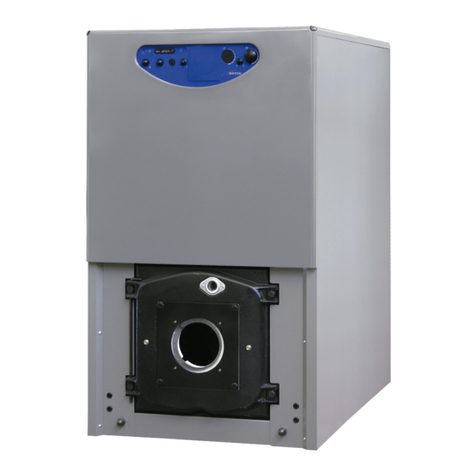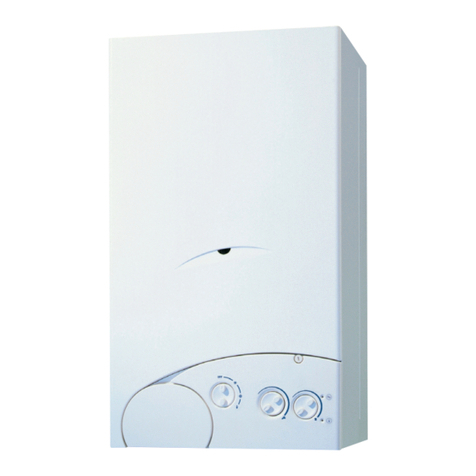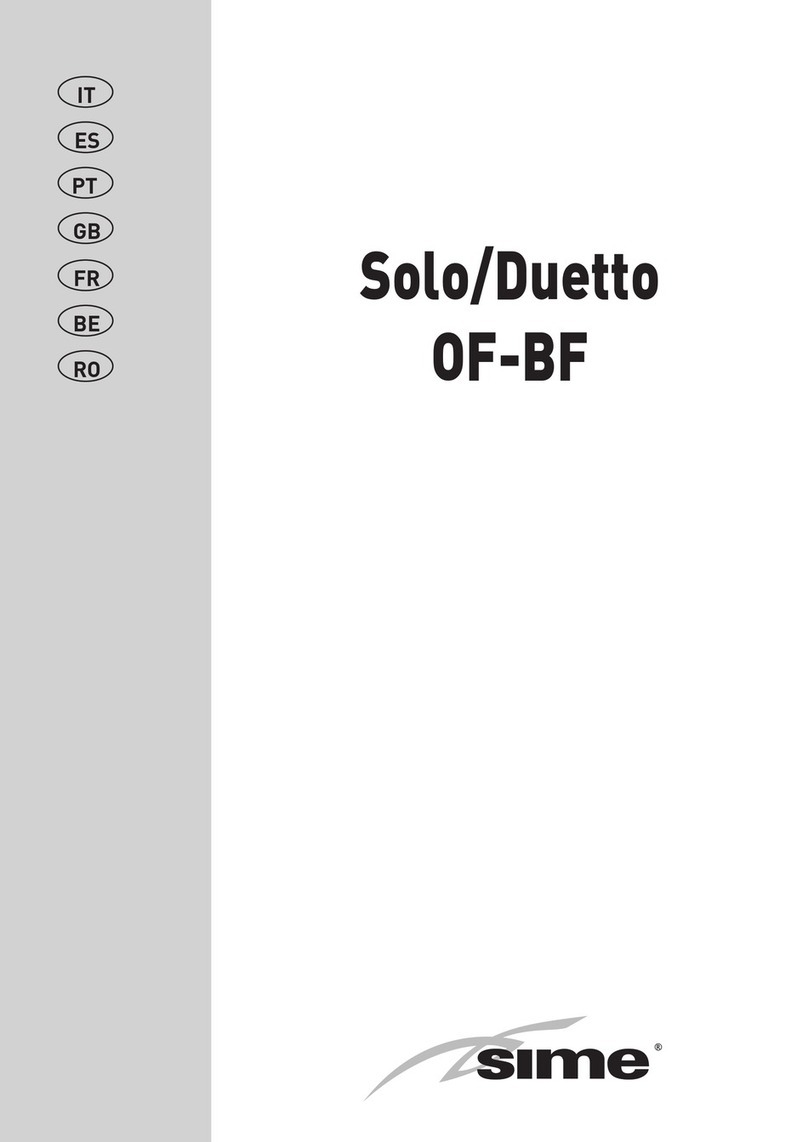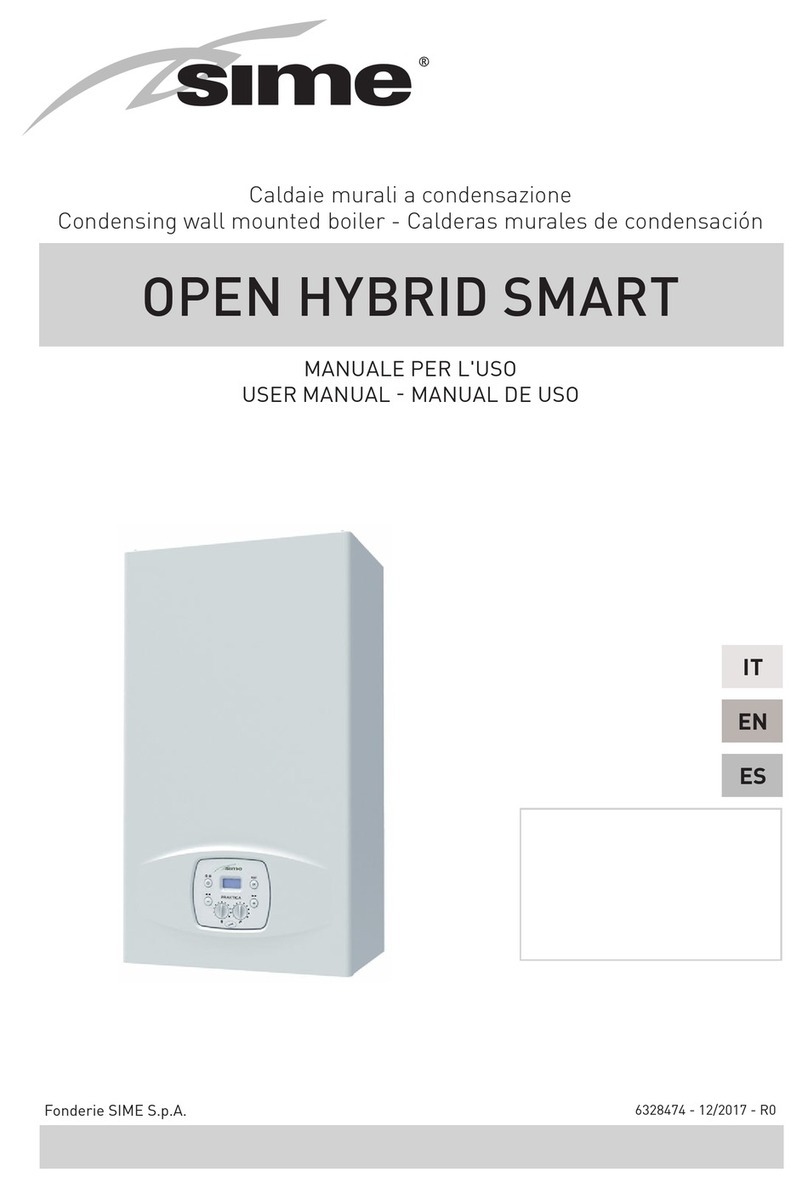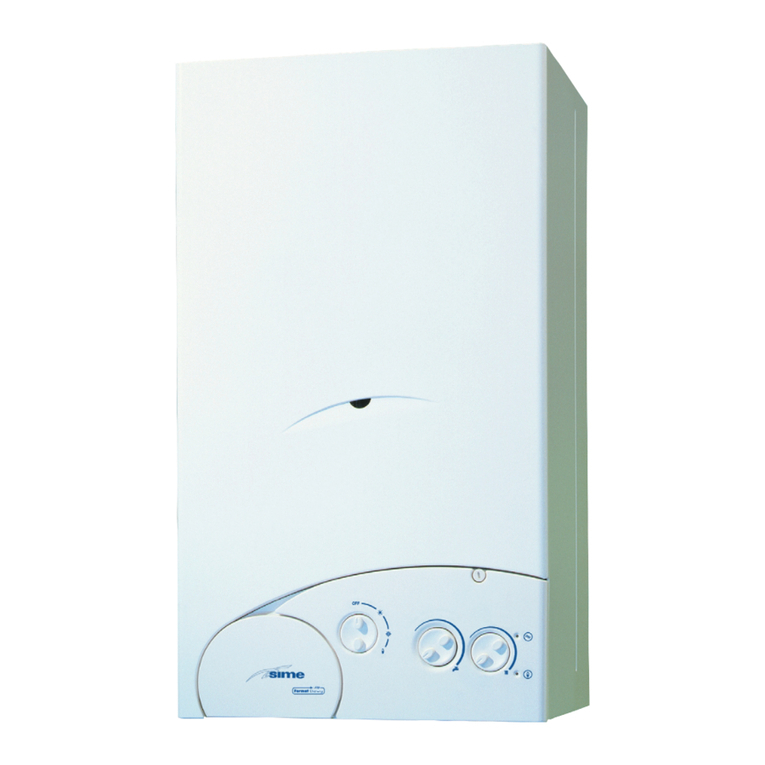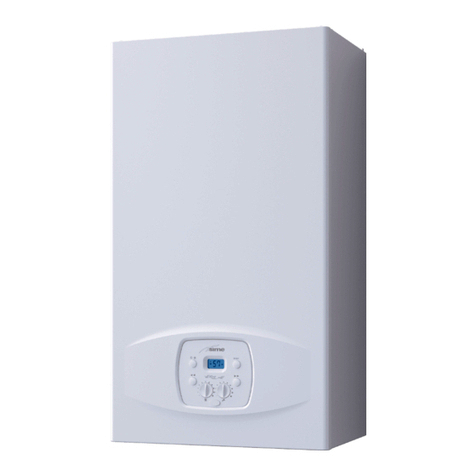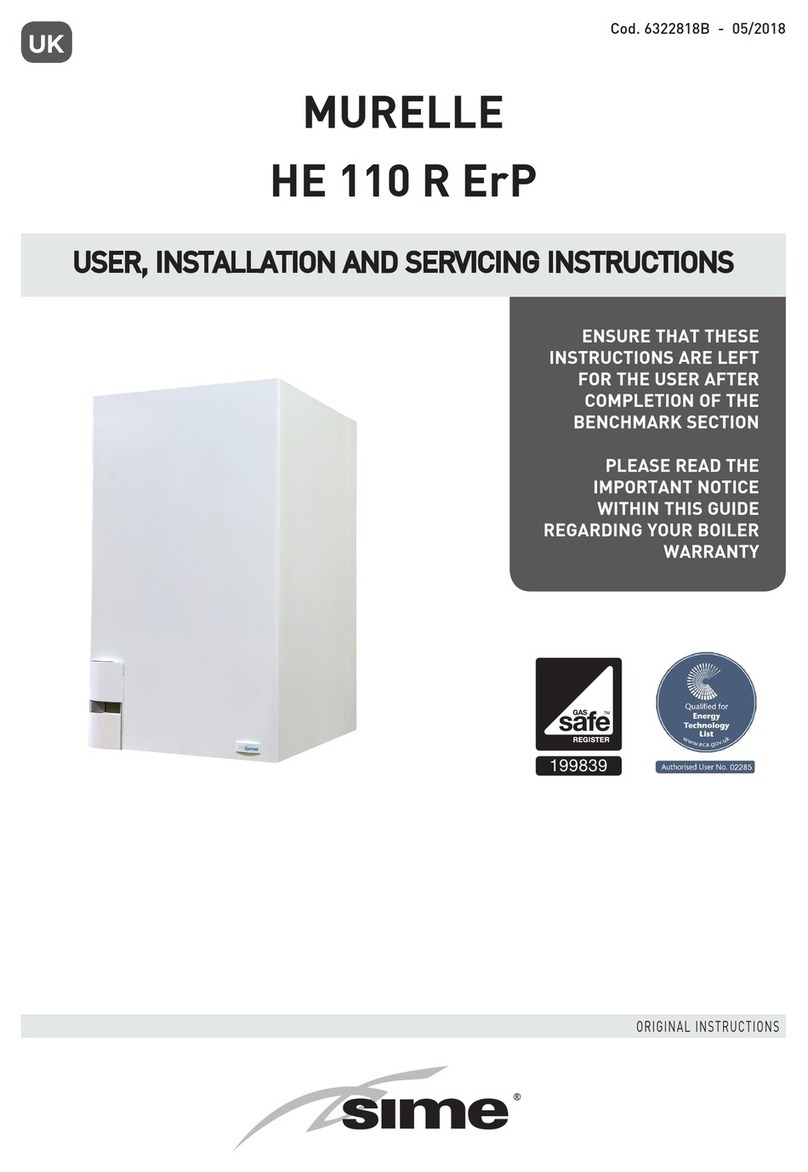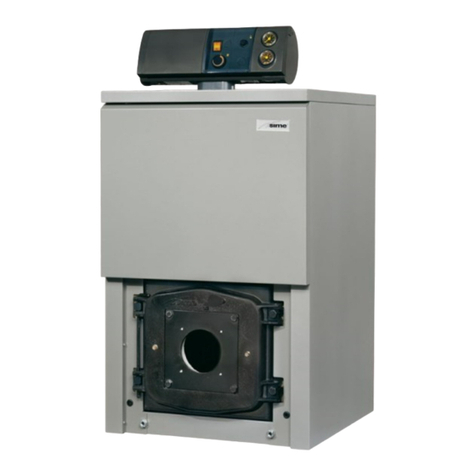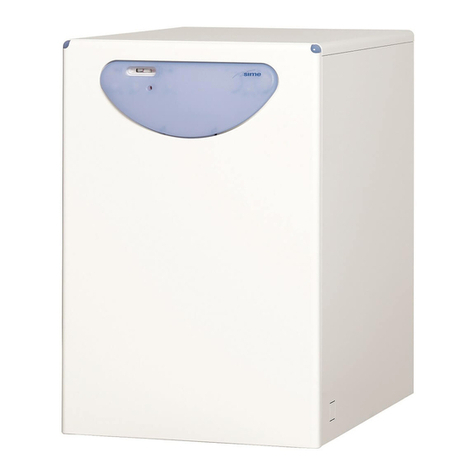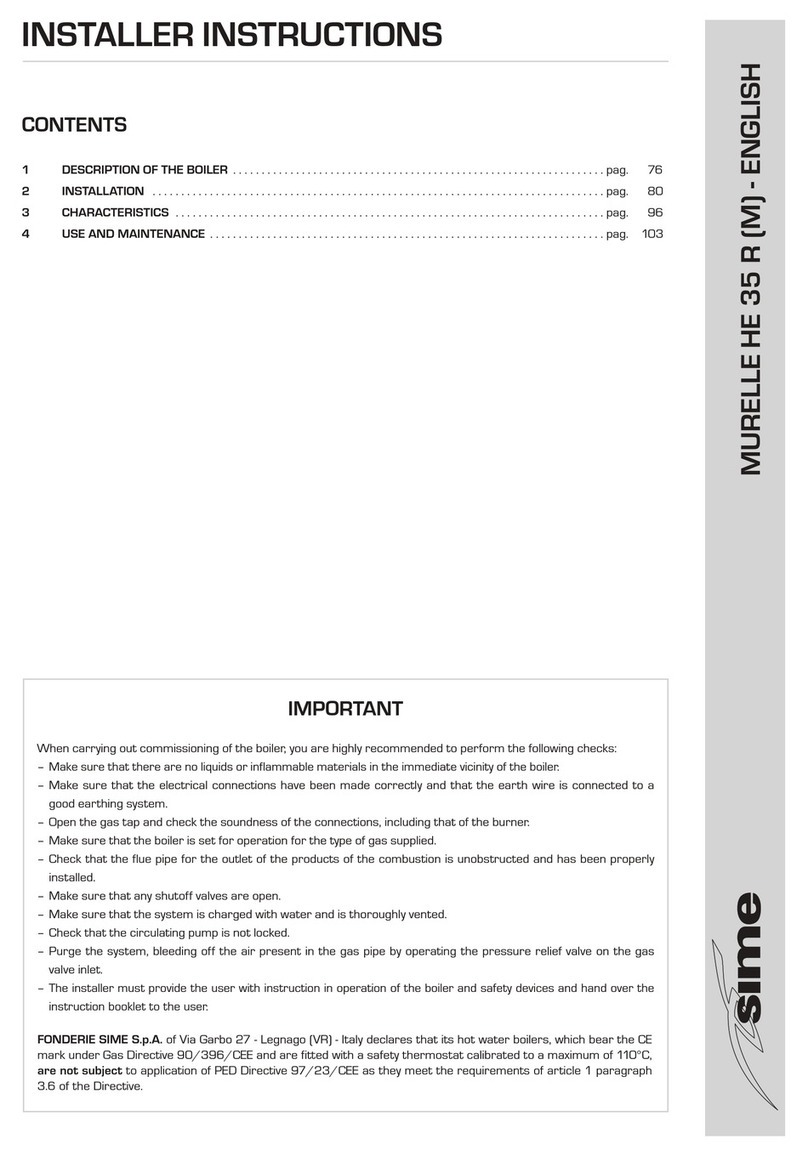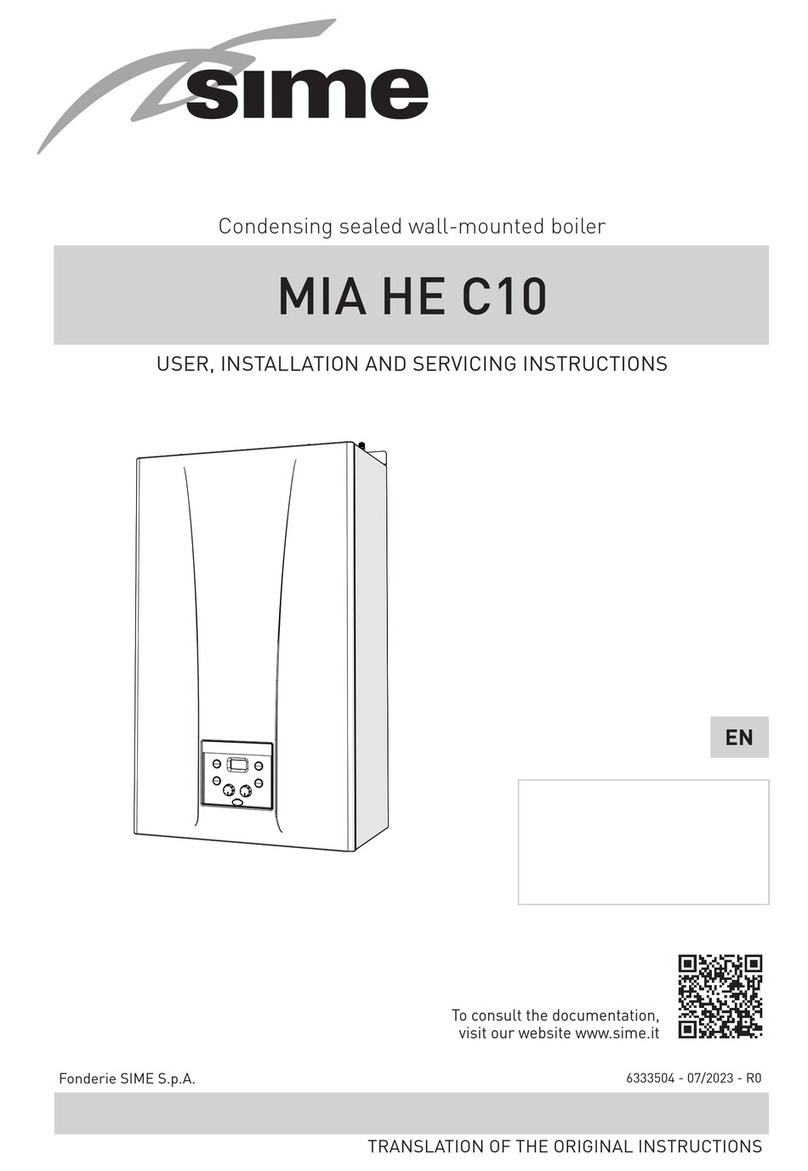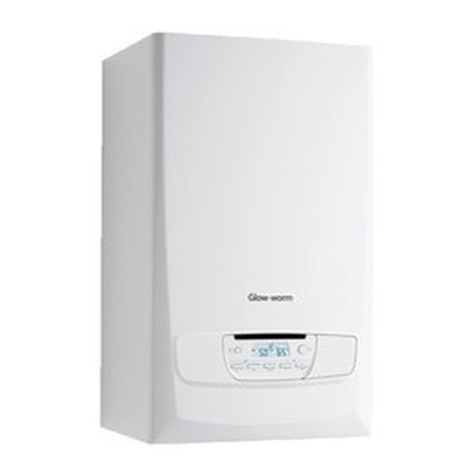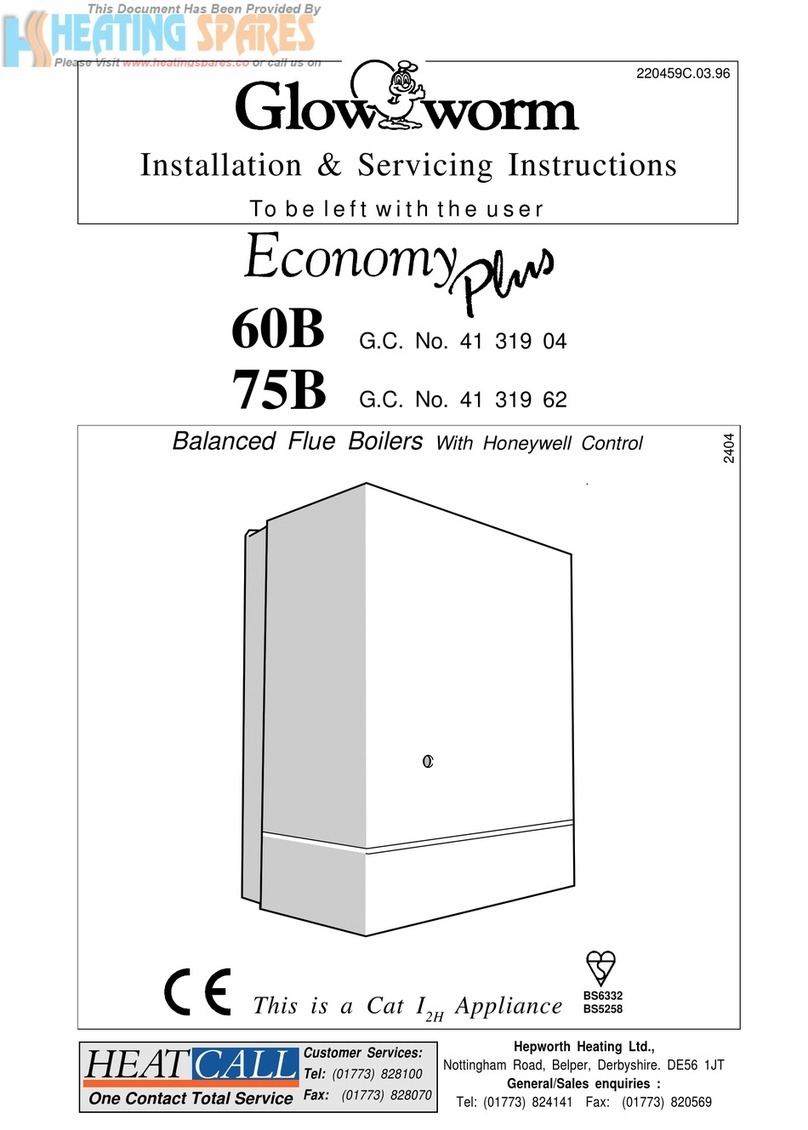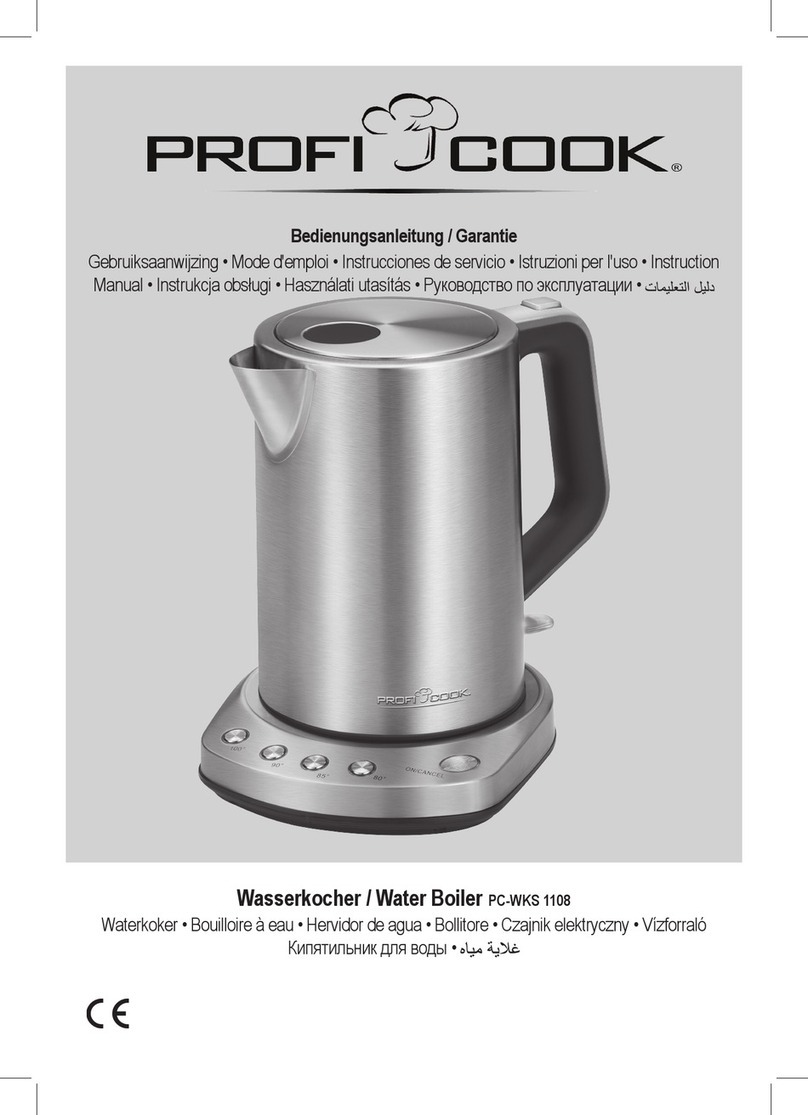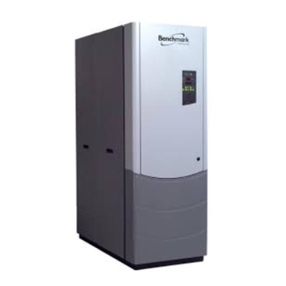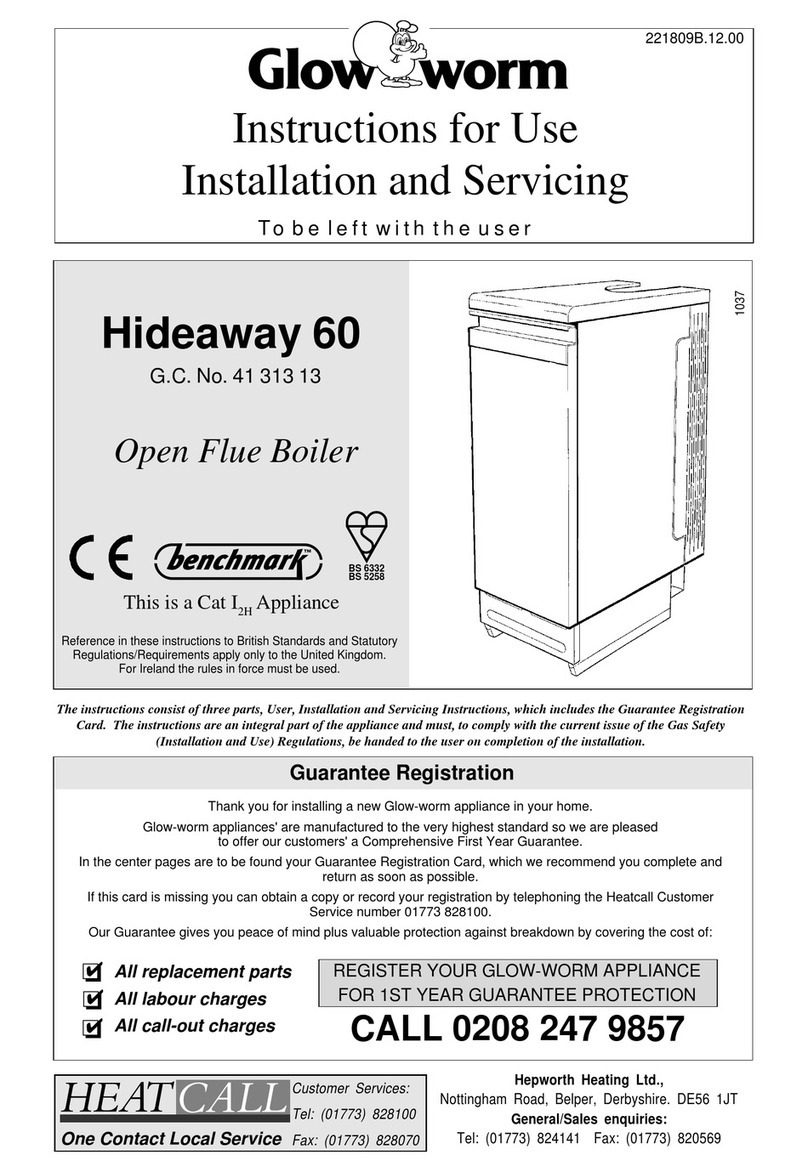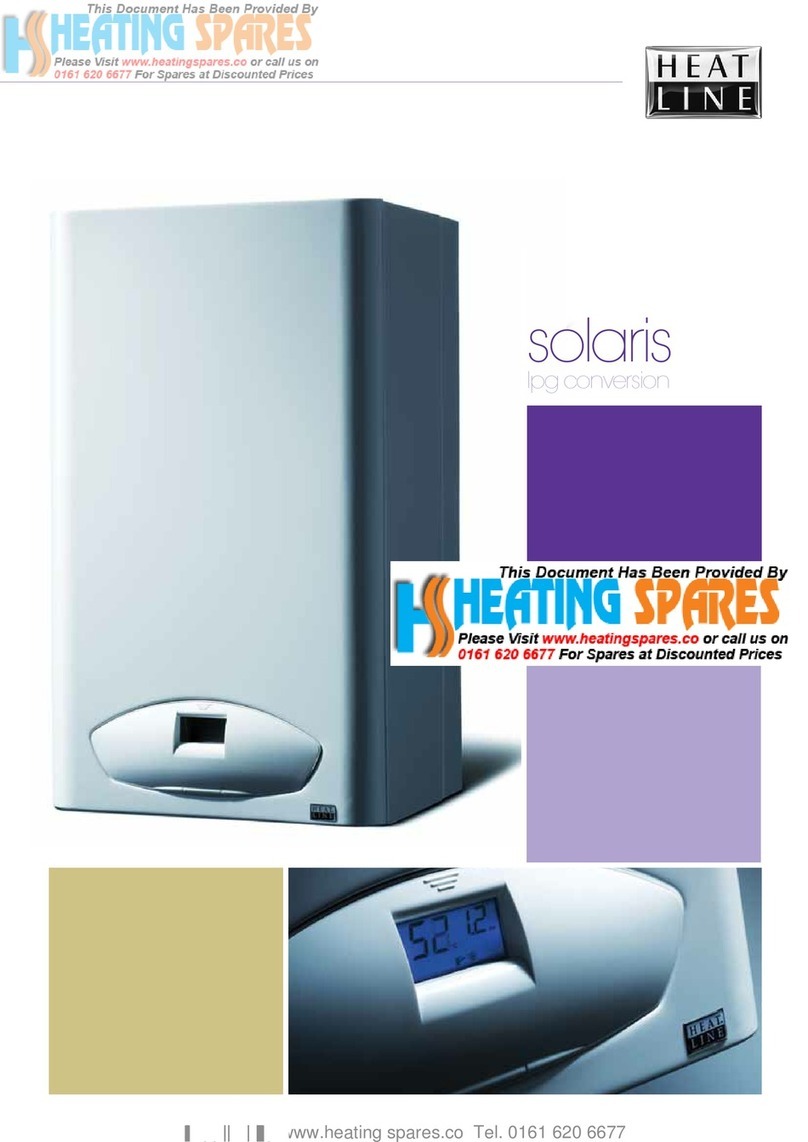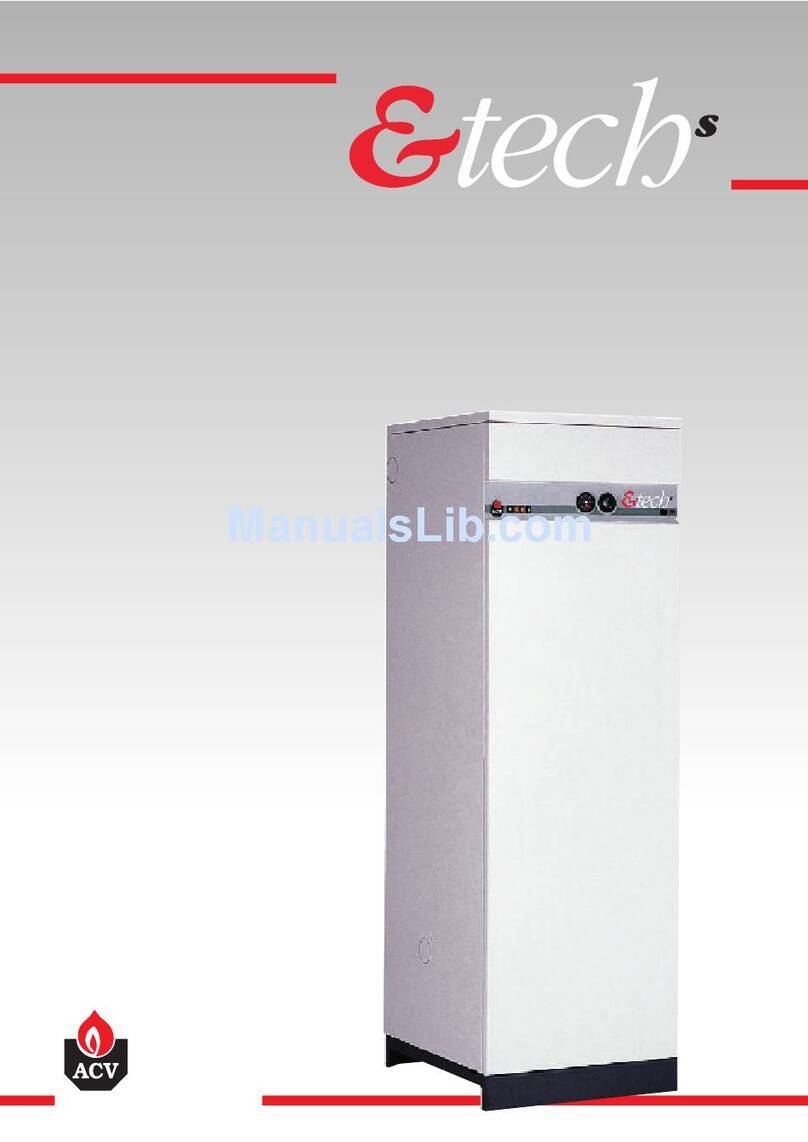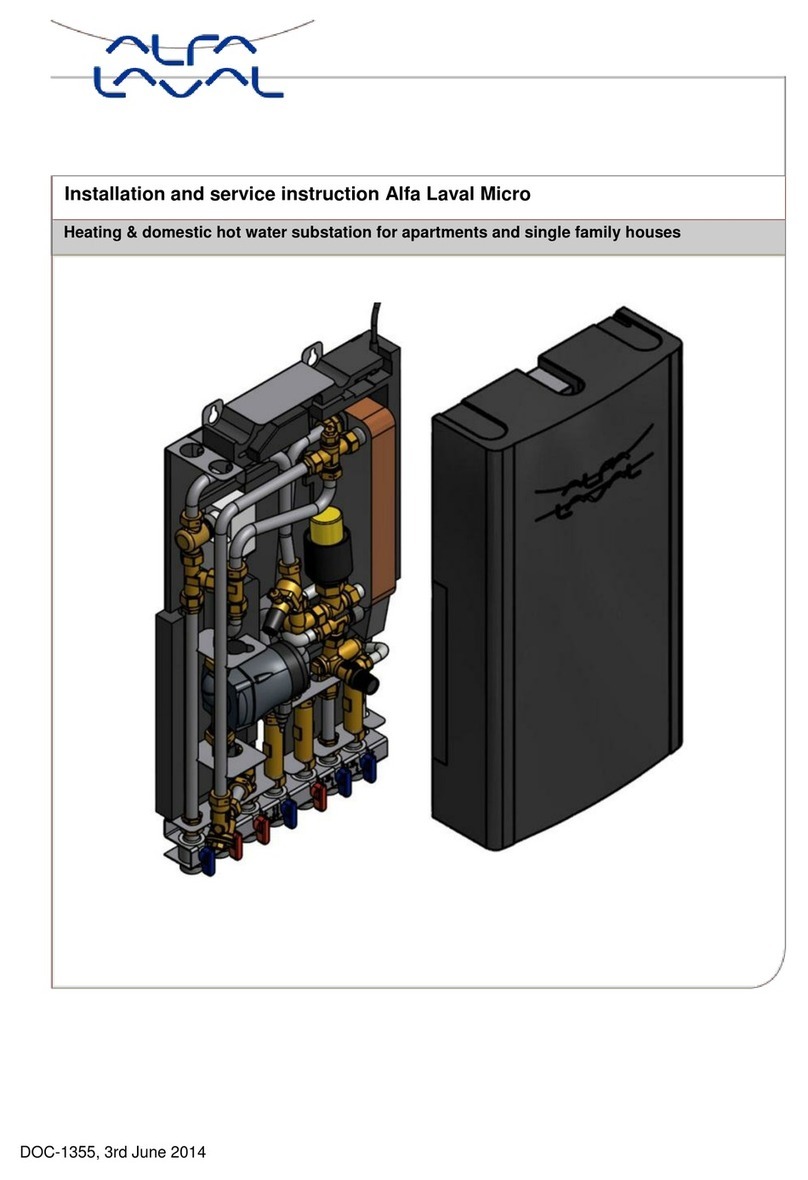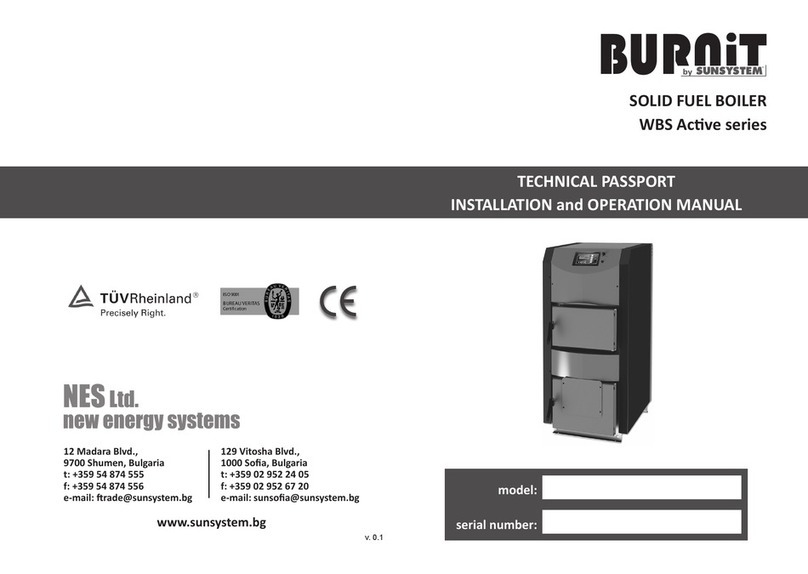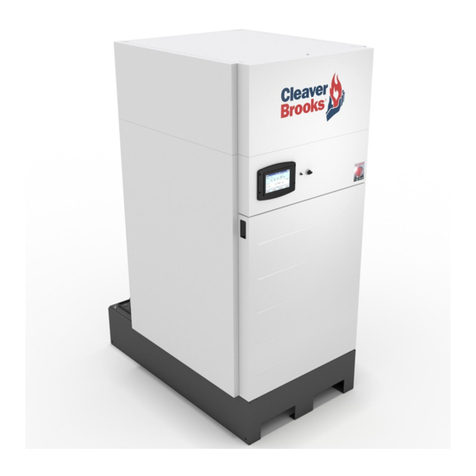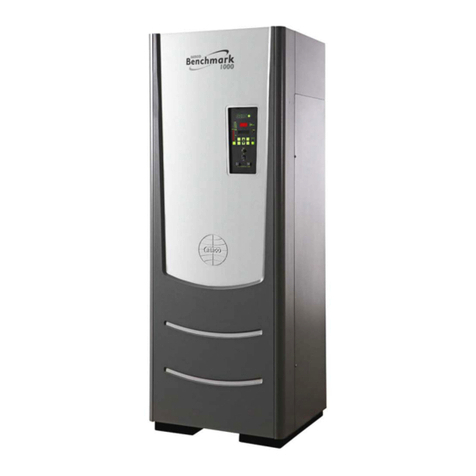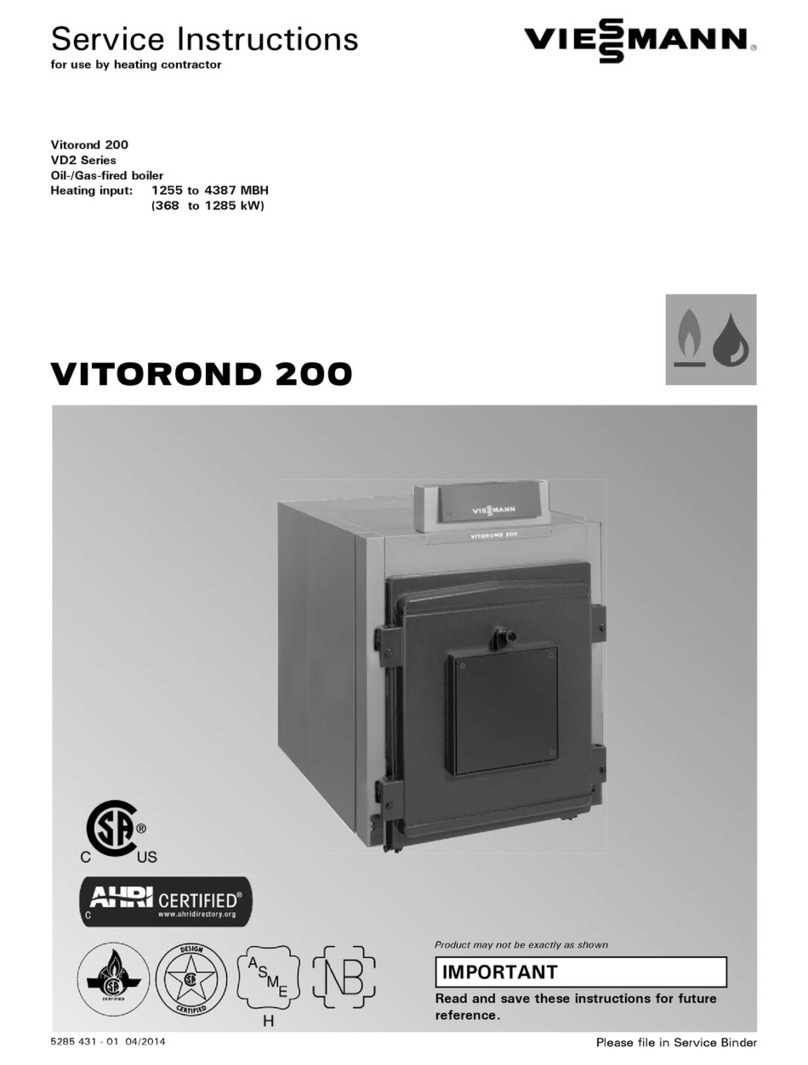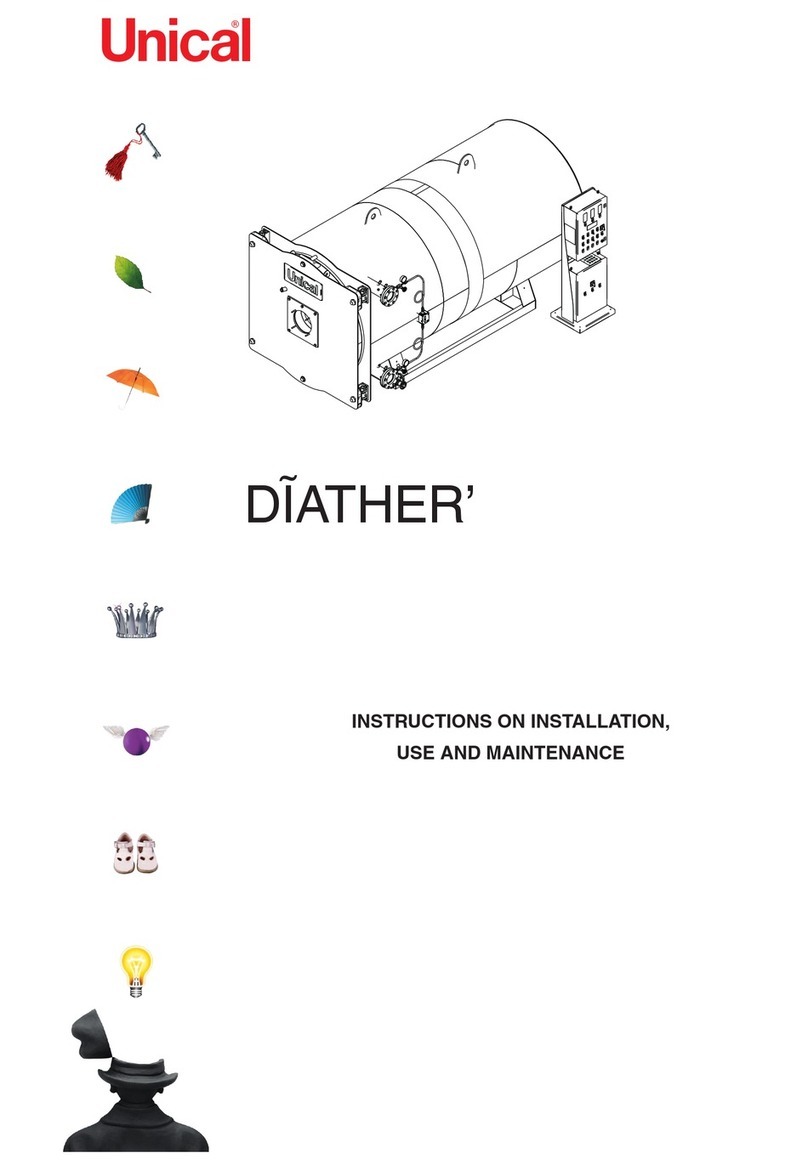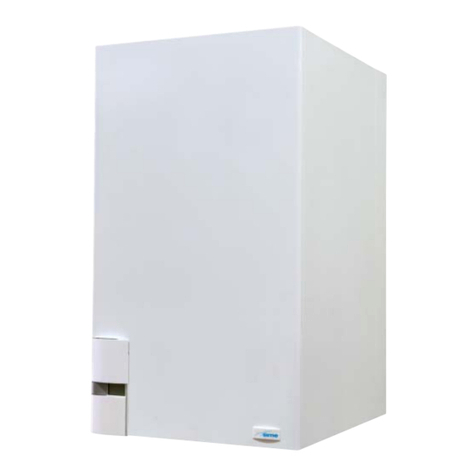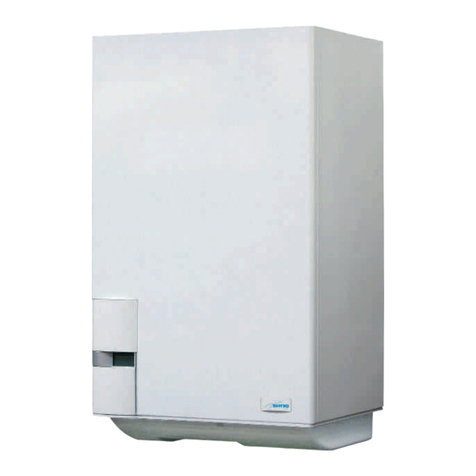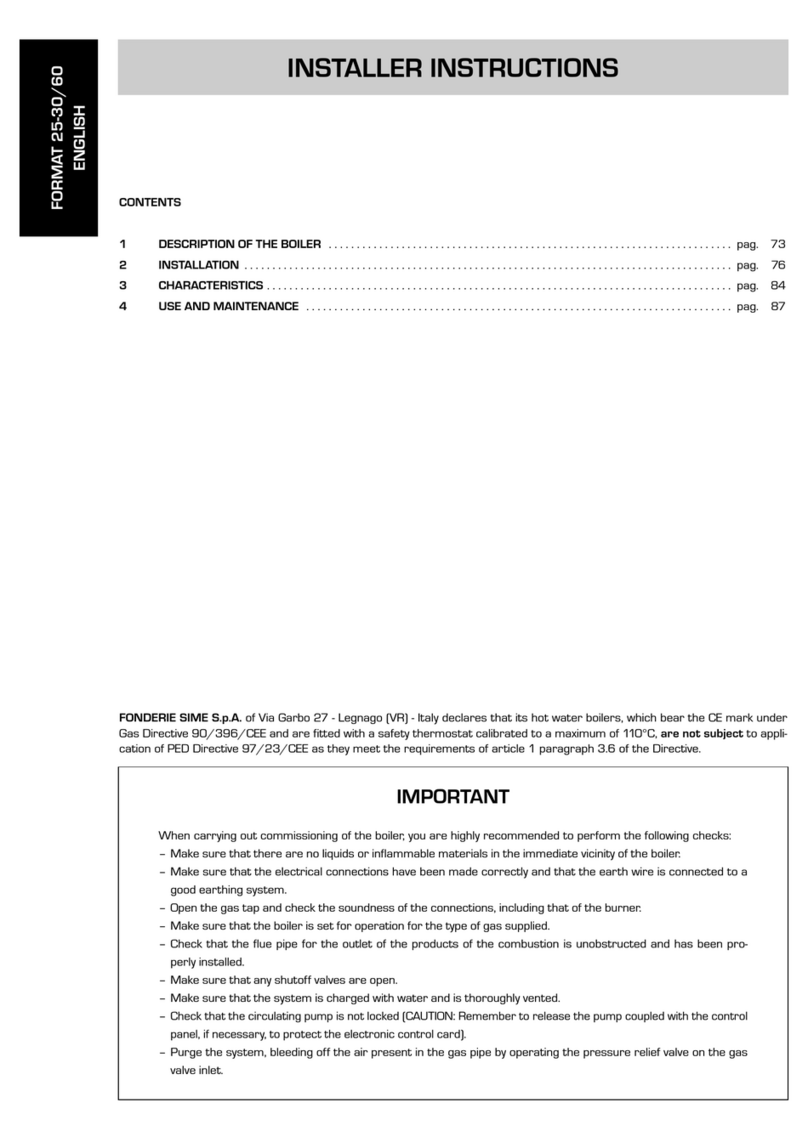49
IT
ES
GB
RUS
FR
BE
1.2 INSTALLATION
1.2.1 BOILER ROOM
Check that the room has the requirements
and features in accordance to the rules in
force. Furthermore, the room should be
aired, in order to have a regular combustion.
Therefore it is necessary to practice some
openings in the walls of the room, which cor-
respond to the following requirements:
– They should have a free section of at
least 6 cm2for each 1,163 kW (1000
kcal/h). The minimum opening section
shouldn’t be smaller than 100 cm2. The
section can also be calculated, using the
following ratio:
where “S” is expressed in cm2.
“Q” is expressed in kcal/h
– The opening should be situated on the
lower part of an outer wall, preferably on
the opposite of the one for the combu-
stion gas discharge.
1.2.2 CONNECTION TO THE FLUE
A flue should correspond to the following
requirements:
– It should be of waterproof material and
resistant to temperature of smokes and
related condensations.
–
It should be of a sufficient mechanical resi-
stance and a weak thermal conductivity.
– It should be perfectly hermetic in order
to avoid cooling of the flue.
– It should have the most possible vertical
process and the terminal part should
have a static aspirator, which assures an
efficient and constant discharge of the
combustion product.
– In order to avoid the wind creating a very
high pressure around the chimneypot,
so that it prevails on the ascensional
force of the combustion gas, it is neces-
sary that the discharge orifice hangs
over at least 0,4 meters of whatever
structure adjacent the chimney itself
(including the roof ridge) of at least 8
meters.
–
The flue shouldn’t have a diameter infe-
rior to the boiler connection; for flues with
square or rectangular sections, the inter-
nal section should be higher than 10%
compared to the boiler connection one.
– The net section of the flue can be obtai-
ned from the following ratio:
S section resulting in cm2
K reduction coefficient:
– 0,045 for wood
– 0,030 for carbon
P boiler capacity in kcal/h
H height of the chimney in meters
measured from the flame axis at the
exhaust of the chimney in the atmo-
sphere. For the dimensioning of the
flue you should consider the effecti-
ve height of the chimney in meters,
measured from the flame axis at the
top, diminished with:
– 0,50 m for each direction chan-
ging of the connection tube
between boiler and flue;
– 1,00 m for each horizontal deve-
lopment meter of the connection
itself.
1.2.3 CONNECTION OF THE PLANT
The connections should be easily disconnec-
ted by means of pipelines with revolving
joints. It is always advisable to assemble sui-
table interception shutters on the piping of
the heating installation.
CAUTION: It is obligatory to assemble
safety valves on the system.
Plant filling
Before starting with the connection of the
boiler it is advisable to let the water circula-
te in the piping, in order to eliminate possi-
ble foreign bodies, which could compromise
the correct operation of the appliance.
The filling should be carried out slowly in
order to make the air bubbles go out throu-
gh the proper outlets, placed on the heating
installation.
The cold loading pressure of the plant and
the pre-blowing pressure of the expansion
tank, should correspond or however
shouldn’t be inferior to the height of the sta-
tic column of the plant in case of closed cir-
cuit heating installations (for example, for a
static column of 5 meters, the pre-loading
pressure of the tank and the loading pres-
sure of the plant should correspond at least
to a minimum value of 0,5 bar).
Features of the feed water
THE TREATMENT OF THE WATER USED
FOR THE HEATING INSTALLATION IS ABSO-
LUTELY NECESSARY IN THE FOLLOWING
CASES:
– Very vast plants (with high water con-
tents).
– Frequent replenishment water inlets in
the plant.
– If the partial or total emptying of the
plant should be necessary.
1.2.4 BRAZIER GRID ASSEMBLY
(optional)
In order to carry out the assembly proceed
in the following way (fig. 3):
– Punch the card of the outer part,
between the front head and the interme-
diate element, using a bit of 10 ø as indi-
cated in the detail (B).
– Place the back grid (12) in the combu-
stion chamber.
– Place the front grid (10) and block it to
the hub (9) with the screws (8) and the
nuts (7); block the front grid from the
right side of the boiler body with the
screws (5).
– Hook the tie rod (6) to the seats extrac-
ted from the front and rear grid.
– Place the intermediate grids (11).
– Introduce the ring (4) and the lever (3) on
the hub (9), fixing then everything with
the washer (2) and the screw (1).
Q
S=
100
P
S=K3H
LEGEND
1 Screw TE M8 x 10
2 Grower washer
3 Grid lever
4 Ring for lever
5 Screw TE M8 x 35
6 Tie rod
7 Nut M 10
8 Screw TE M10 x 50
9 Hub
10 Front grid
11 Intermediate grid
12 Rear grid
Fig. 3




















